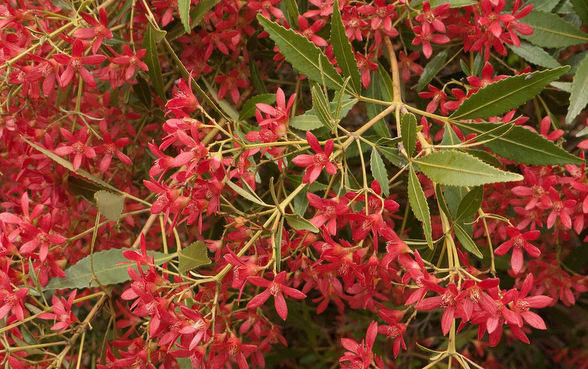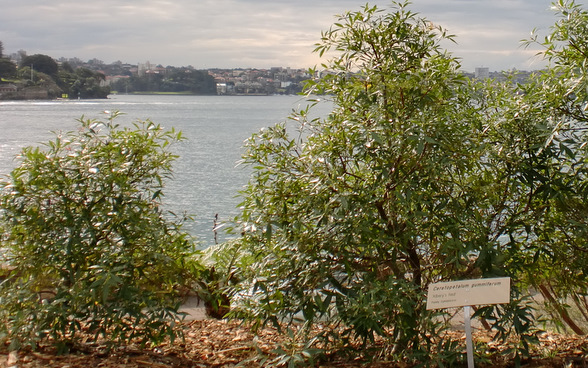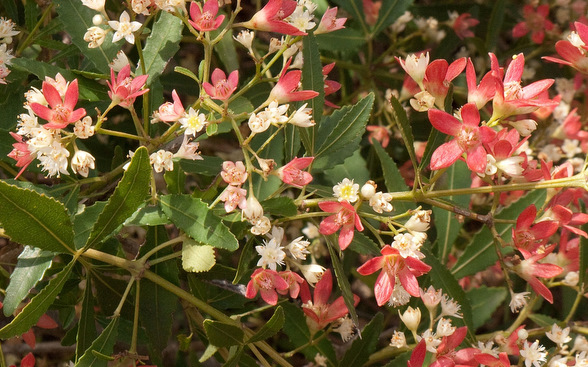Fruits/Seeds
A seed pod containing a single seed is found inside the red sepal “flower”. It falls to the ground when ripe.
Field Guide
Improve your identification skills. Download your NSW Christmas Bush field guide here!
Its genus name Ceratopetalum means horned-petal after one of the species that has petals resembling stag’s horns, and its species name gummiferum means gum-bearing after the gum that oozes out of its bark.
Evergreen shrub or small tree, up to 10 m high and 6 m wide, but much smaller when grown in gardens where it reaches a height of only 2 – 5 m.
Glossy green and made up of three leaflets which are 3 – 8 cm long and 0.5 – 3 cm wide when mature. They are thin, with serrated edges, and are a golden orange-red colour when young.
Initially creamy white and star-shaped, forming clusters that are 10 cm long. Each flower has five petals that are about 3 mm long. After pollination the white petals fall off, leaving the outer sepals which enlarge to about 12 mm long and turn deep pink to orange-red. These “flowers” consist of five sepals and are also star-shaped. They are commonly mistaken for flowers, but the real flowers are the less noticeable white ones.
A seed pod containing a single seed is found inside the red sepal “flower”. It falls to the ground when ripe.
Improve your identification skills. Download your NSW Christmas Bush field guide here!

First fully open single flower
Full flowering (record all days)
End of flowering (when 95% of the flowers have faded)
Seeds/pods dropped to the ground (record all days)


The NSW Christmas Bush is widely farmed for the florist industry and even exported overseas.